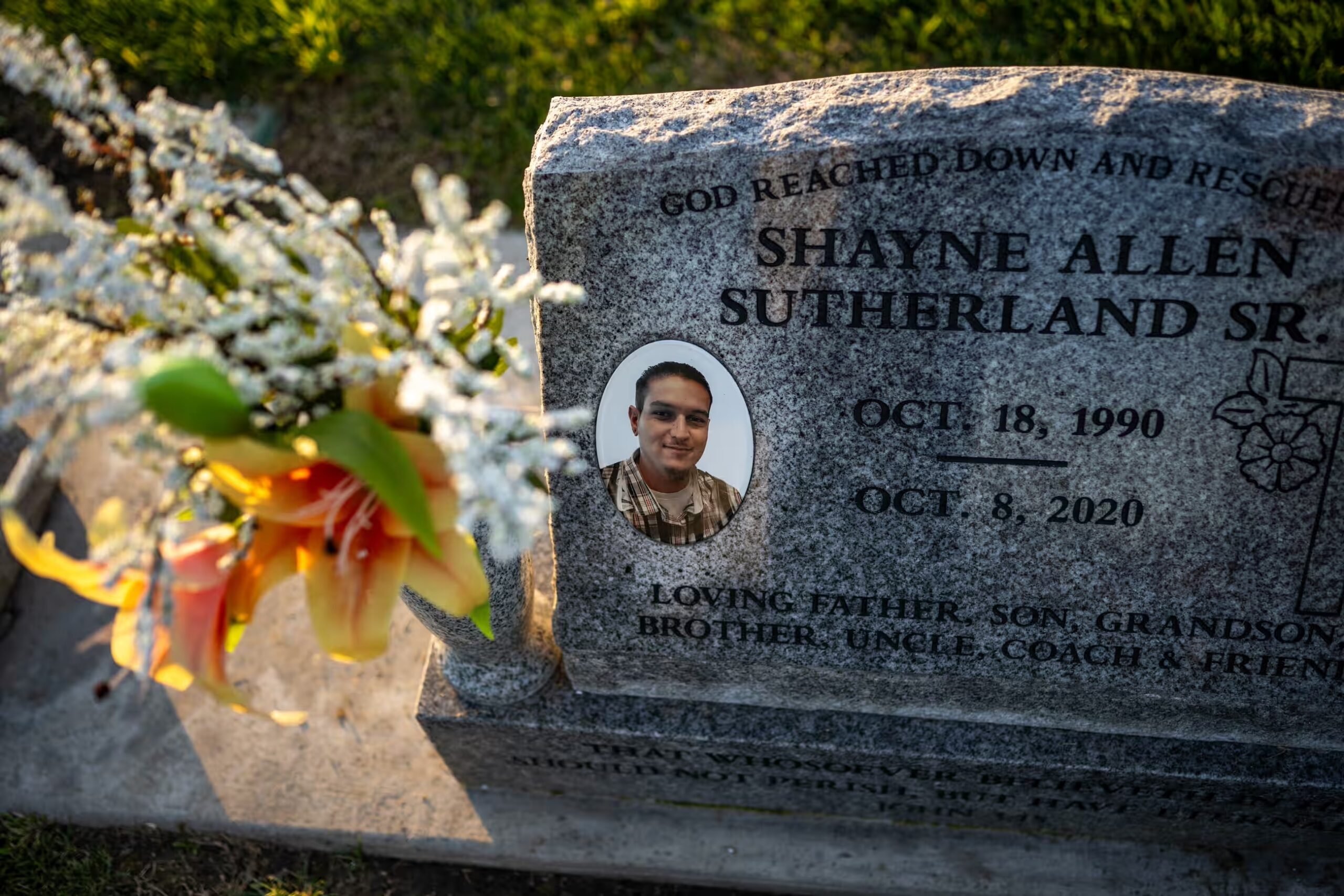
Despite decades of warnings, police continue holding people facedown
At least 22 Californians have died while being held face down by police since 2016, although police have known the dangers of holding people in prone restraint for decades.
Not long after Minneapolis police held George Floyd stomach-down until he died, a young man named Shayne Sutherland died in a very similar fashion when a routine call to Stockon, California, police officers went tragically awry. Sutherland called 911 from a convenience store on a Thursday morning asking for a taxi. Though high on meth, he was unarmed and did not not appear to be a threat to officers, who put their weight on his face-down body for nearly nine minutes as he gasped for air and begged in vain for his life.
Experts say deaths like Sutherland’s are by and large preventable. As far back as the 1990s, the law enforcement community and medical experts have been sounding the alarm about the lethal dangers of police holding people facedown for long periods to subdue them, a maneuver known as prone restraint. Despite this knowledge, and despite a number of laws banning prone restraint – including California’s AB 490, which bans any maneuvers that put people at risk of being unable to breathe due to the position of their body – this practice continues.
The California Newsroom, in partnership with the California Reporting Project, wanted to find out how many Californians have died after being held prone by police. But no dataset existed that tracked the specific types of restraint used by police prior to a civilian’s death — so we decided to create one ourselves.
Emily Zentner and I spent nearly two years working with student researchers from UC Berkeley and Stanford University to file public records requests and identify possible prone restraint cases. We helped those students examine case files and enter data on those restraint incidents in a double-entry system, then edited that data. All the while, we fought for records to identify more cases, interviewed medical and legal experts about prone restraint and connected with the families of people who died following prone restraint.
Myself, Zentner and a team of researchers pored over thousands of pages of police use-of-force reports, lawsuits, medical examiner and coroner investigations and district attorney reports. Through this work, we discovered that between 2016 and 2022, at least 22 people died in California after being restrained in the prone position by law enforcement. Almost all of those who died were unarmed, and all 22 cases involved people in crisis – struggling with addiction, mental illness or behaving erratically.
Other noteworthy findings include the fact that five of these people died after May 2020, when George Floyd was killed by Minneapolis police; and two died after California’s AB 490 went into effect.
To put a human face on our data and analysis, we told the story of Sutherland, a father of two who struggled with substance abuse in the years and days leading up to his run-in with officers at a Stockton convenience store. We talked to more than a dozen experts, from medical examiners and law enforcement experts to academics and politicians, who provided insight into policies about the use of prone restraint, scientific understanding of why the practice is so dangerous when misused, and how law enforcement agencies can mitigate against future prone-restraint deaths.
Impact
After this story ran, the city of Stockton settled a lawsuit with the Sutherland family for $6 million. The Alameda County District Attorney charged an officer with the death of Mario Gonzalez, one of the 22 people we cited in our story. The Guardian US, which ran our story, has since asked our team to collaborate on a major police use-of-force investigation. Frontline and the Associated Press, which ran a national story about police restraint about a month after our story was published, have reached out about possible collaborations and public events on the subject of police use of force. Dr. Alon Steinberg, one of the country’s best-known experts on prone restraint, who we spoke to for our story, asked us for the database we created to use in future.